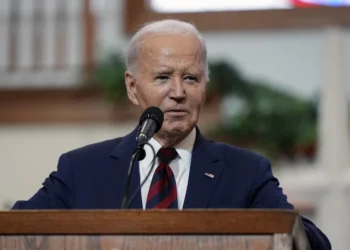For openers, kudos to President Donald Trump for his leadership on addressing this heretofore missing piece of the energy puzzle. Incomprehensibly, the preceding administration embarked on a Quixotic mission to eliminate the use of fossil fuels, while simultaneously ignoring our single safe, abundant, and non-polluting means of generating electricity.
Somehow, in the midst of ongoing firestorms on immigration, trade, taxes, and two wars, Trump still manages to attend to other important matters that have been lost in the shuffle. Some call it chaos, but we should be happy to have a president with the stamina to keep so many balls in the air.
Will Trump’s blitz of actions get nuclear power back on track? The only way to answer that question is to understand how we got so far off track so quickly and so completely. Why did we suddenly stop building nuclear plants? It’s a complicated picture with numerous parts and pieces. But in my opinion, it all boils down to one root cause: the realization by prospective investors that nuclear power’s opponents, with sufficient legal and political support, can render a new, multibillion-dollar facility unusable.
If that seems implausible, consider the fate of the Shoreham Nuclear Power Plant, the poster child for anti-nuclear activism. That plant was built by the Long Island Lighting Company (LILCO) to supply Long Island’s rapidly growing electricity needs. It was a conventional nuclear plant design similar to others in operation, authorized for construction by the Nuclear Regulatory Commission (NRC), and compliant with the NRC’s numerous technical requirements.
Construction was completed in 1984, 11 years after it began, at a cost of over $5 billion. The project had been delayed several times to accommodate concerns raised by objectors. However, it was when the plant was ready to commence commercial operation that its opponents claimed the plant should not be allowed to operate at all, arguing that an emergency evacuation of the public, if needed, would be impossible in the congested Long Island area.
The legal wrangling continued for five long years, during which Suffolk County ultimately deemed emergency evacuation to be “infeasible” — a head-scratching conclusion given that Long Island famously evacuates hundreds of thousands of residents daily to and from New York City and on summer weekends to and from Jones Beach. Nevertheless, the county refused to participate in the requisite emergency planning, New York Governor Cuomo weighed in, and the NRC withheld authorization for plant operation. The plant was decommissioned in 1989.
In effect, then, the Long Island ratepayers ultimately paid to build the plant, then to unbuild it, and then to replace the energy that it would have produced by it. And what future investor would choose to spend billions on a new plant without confidence that it will someday generate revenue?
How did we get to that intractable conflict? Obviously, the nuclear accident at Three Mile Island (TMI) on March 28, 1979, played a part — but TMI was the catalyst, not the cause.
Arguably, the TMI accident was the best thing that ever happened to the nuclear industry — it was a bracing wake-up call on nuclear safety that changed the way we train, maintain, and operate our plants. While it was financially devastating for the plant owner, no one was injured.
Let that sink in: TMI was the cataclysmic event that terrified the world, and derailed an industry. It was by far the worst nuclear accident in U.S. history (before or since). And it didn’t hurt anyone. What does that say about our progress in developing means to safely tame the atom?
The real consequence of TMI was an overnight reversal in the public perception of nuclear energy. In Walter Cronkite’s words that night, “The world has never seen a day quite like today.” In the public eye, nuclear power went from an admirable technological advancement — fulfilling Dwight Eisenhower’s “Atoms for Peace” vision — to a dark and scary misadventure. The accident pumped life into the fledgling anti-nuclear protest movement, and in so doing, it introduced a wholly unwarranted political dimension into what should be a straightforward matter of public safety and environmental protection. And it spooked investors.
As a result, decades have been lost by not taking full advantage of nuclear energy, thereby hindering real progress toward the ultimate reduction in dependence on fossil fuels. Clearly, President Trump’s objective is to make up that lost ground.
His actions will help in many respects, but I believe a sharper focus is needed in several areas:
NRC effectiveness. A major thrust of the Trump executive order is the reformation of the NRC. Yes, NRC is a government agency, a bureaucracy — and like all bureaucracies, it can be slow and ponderous. There’s always room for improvement. But in my 50-year professional experience, I’ve found the NRC to be highly professional, and I do not believe NRC ineffectiveness has been a significant factor in the collapse of commercial nuclear power in the U.S.
Moreover, I’d argue strongly that NRC must remain solely focused on nuclear safety, not nuclear power promotion. Today’s nuclear plants are demonstrably safe because we are obsessive about safety. Cheerleaders are great, but not with double-duty as referees. As the world has learned from TMI, Chernobyl, and Fukushima, nuclear safety is job 1. We must never loosen the reins.
Emergency response. It is imperative (and so far not addressed in Trump administration actions) that we preclude repetition of travesties such as the Shoreham closure. Doing so may be difficult because it requires collaboration among federal (NRC) and state, county, and local authorities, and thus may be ripe for political influence. Suffolk County’s refusal to do its job at Shoreham has the distinct feel of “sanctuary city” behavior in 2025. We can’t live with it.
It’s NRC’s responsibility to set reasonable emergency protection and evacuation requirements. In that respect, it is important that they recognize that for conceivable severe nuclear accidents, the primary risk areas are very close to the plant boundaries. Unduly extended evacuation zones are counterproductive, as they effectively put those at risk at the “back of the line” behind other not-at-risk evacuees.
From that point, it is the fundamental responsibility of state and local authorities to make it work, even if they wish the plant had been located elsewhere.
Also worth noting is that nuclear plant processes for emergency communication, public sheltering, and evacuation have become the gold standard in public protection in all kinds of emergency situations. On many occasions, communities near nuclear plants have benefited greatly from the planning and practices already in place as they deal with natural or man-made disasters.
Nuclear waste. High-level radioactive waste disposal has been a controversial topic for decades, but one that is fairly simple to solve. The spent fuel removed from an operating reactor is highly radioactive and will remain so for hundreds of years. But it is physically and chemically stable, and more importantly, it is remarkably compact, to the degree that the fuel expended in powering cities for decades can in most cases be safely stored on the plant site in rugged, air-cooled casks. By comparison, keep in mind that the waste from fossil fuel combustion —the man-made component of the climate change everyone is worried about — goes into the earth’s atmosphere, unretrievable, and permanently problematic.
For the very long term, disposal in geologically stable, remote locations — the very sensible and unnecessarily controversial Yucca Mountain project as a prime example — will be necessary. That’s not a particularly difficult technical problem; it simply requires political will.
Small plants. Small is beautiful (sometimes). For years, many in the industry have looked at small plants — the Small Modular Reactors (SMRs) and now “micro reactors” — as the key to resurgence. And in some respects, small plants have merit, with lower capital costs per plant, a better fit for rural areas, and potential for standardization.
But on the other hand, nuclear economics inherently favors large plants. Every reactor, large or small, requires multiple redundant safety systems, extensive and complex instrumentation and controls, and robust independent containment structures. Economies of scale strongly argue in favor of packing as many power-producing reactor cores as possible into each plant, which explains the historical progression in our existing nuclear fleet toward larger and larger plants.
Additionally, the high energy demands of emerging digital information systems necessitate larger, not smaller, plants. My view: the renaissance should open the door to small plants where beneficial, but as an additional dimension, not an alternative to large (1,000 MWe or larger) plants.
Novel technologies. Caution flag here. Certainly, there are ways other than today’s water-cooled, fission reactors to extract the boundless energy trapped in the nucleus of Uranium (or other elements) and produce electricity. But keep in mind that we’ve now invested 60-plus years in learning how to do so efficiently and safely with current technology. TMI and Fukushima are part of that learning experience.
The exploration of novel designs should be the work of universities and national laboratories. We should not saddle NRC with the burden of reviewing and licensing novel technologies, particularly on the accelerated timeframe called for in the president’s executive order. That would be an invitation to very unpleasant surprises.
The innate cost and schedule challenge of restarting an industry. As if waking up from a bad dream and seeing the bright light of a new day, there is a sudden enthusiastic call for restarting nuclear. I’m all in. But retooling a moribund industry is painstaking, slow, and expensive. The two important leadership efforts by U.S. utility companies in Georgia and South Carolina proved as much: the two new Vogtle plants are now on line represent an heroic accomplishment, but one soundly criticized for cost and schedule overruns; and the V.C. Summer nuclear project in neighboring South Carolina that ended disastrously in lawsuits and prosecution, also rooted in cost and schedule overruns. Neither experience was a boost for the badly frayed investor confidence.
Patience please: imagine the cost and schedule of producing a single Ford F-150 pickup truck, in the absence of a Ford Assembly Line, in place know-how, and full capacity supply chain!
The bottom line: The president’s new directives are on target but missing some important pieces. His goal of quadrupling U.S. nuclear capacity from 100GW to 400GW by 2050 seems ambitious; but in 1979, 46 years ago, the U.S. nuclear industry’s own target was 1,000 plants — or about 1,000GW— by the turn of the century, and it seemed very doable, before the wheels came off.
Surely, we can get back on track. In my view, the key will be to build on what has worked, bring it back to life and take advantage of modern technological advances. There is no need to grasp for magical new solutions. The U.S. (and much of the world’s) nuclear industry went off the track and over the cliff because investor confidence tanked, but the plants themselves — still being demonstrated by those still on line — have proved to be remarkably resilient.

















